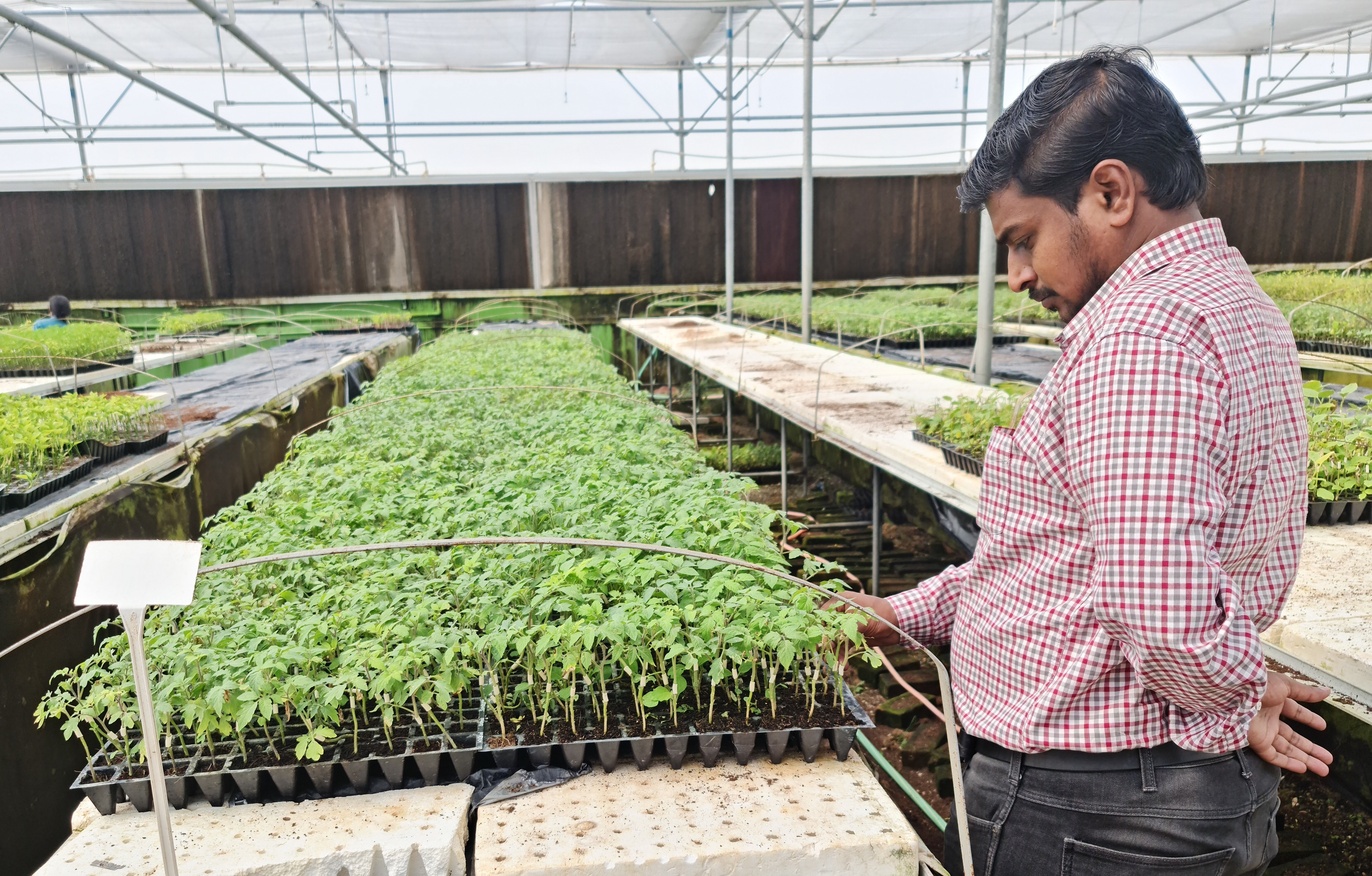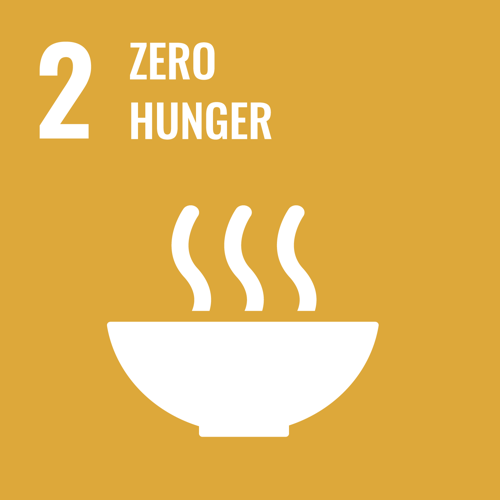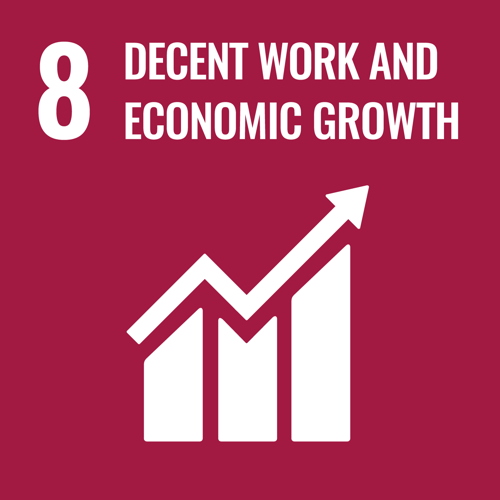Innovative Vegetable Grafting Technology Offers Resilient Yields for Climate-Stressed Cultivation, ICRISAT Study Shows
Research finds grafted tomatoes in polyhouses deliver up to 63.79% higher yields—paving the way for broader adoption across solanaceous crops.

A study by the International Crops Research Institute for the Semi-Arid Tropics (ICRISAT) highlights vegetable grafting as an efficient, climate-smart innovation for smallholder farmers. When paired with protected cultivation like Naturally Ventilated Polyhouse (NVPH), this technique can lead to major boosts in crop yields and farm income.
Recently published in Frontiers in Agronomy, the research shows how grafting—joining a high-yielding vegetable variety (the scion) with a hardy, stress-tolerant rootstock—helps plants thrive even under tough environmental conditions where traditional open-field farming often struggles.
In the study, tomato plants grafted onto Solanum torvum rootstocks and grown in polyhouses yielded up to 63.79% more than non-grafted plants in open fields. The enhanced performance was linked to improved plant vigor, extended harvesting periods (3–5 more pickings), and stronger resistance to environmental stresses. This outcome reinforces the potential of grafting to unlock higher productivity across multiple solanaceous vegetables facing similar challenges.
“Vegetable grafting, especially when combined with protected cultivation, is a game-changer for smallholder farmers,” said Dr Stanford Blade, Deputy Director General – Research & Innovation, ICRISAT. “Our findings show that this approach not only increases yields and profits but also provides farmers with a practical, climate-smart solution for building system resilience.”

Economic Analysis
Grafted vegetables cultivated under NVPH conditions delivered the highest gross and net returns, as well as superior benefit-cost ratios. These findings point to the technique’s potential to increase farmers’ economic resilience in addition to agricultural productivity.
Beyond yield gains, the study revealed additional agronomic benefits: larger leaf areas, higher chlorophyll content, and more robust fruit development—factors that contribute to better plant growth and photosynthetic efficiency.
“This study clearly shows how grafting can help revolutionize vegetable farming in regions facing climate variability,” noted Dr Ramesh Singh, Interim Director – Resilient Farm and Food Systems, ICRISAT. With the right support, this technology can transform horticultural production systems and improve nutrition and livelihoods.”
Dr Rohan Khopade, the lead scientist behind this innovative research at ICRISAT, explained that while the initial focus was on tomatoes, the grafting technique developed is highly versatile. It can be applied to a broad range of vegetable crops—including eggplant, chili, cucumber, gourds, and melons—unlocking the potential to boost productivity across diverse agricultural systems.
Principal Scientist – Agronomy at ICRISAT, Dr Gajanan Sawargaonkar, highlighted the success of the GoAP–ICRISAT collaborative project, which aims to double farmers’ incomes through grafted vegetable technology. He noted that the initiative has delivered significant benefits to farmers across Andhra Pradesh, with vegetable productivity increasing by an impressive 30% to 150%.
As climate change intensifies and food systems face increasing pressure, vegetable grafting has the potential to be a scalable, science-backed solution for improving agricultural outcomes without the need for genetic modification. Its widespread adoption, however, hinges on enabling access through policy support, public-private collaboration, and effective farmer training and outreach.
This work aligns with SDGs 1, 2 & 8.
Roseleen Aind







